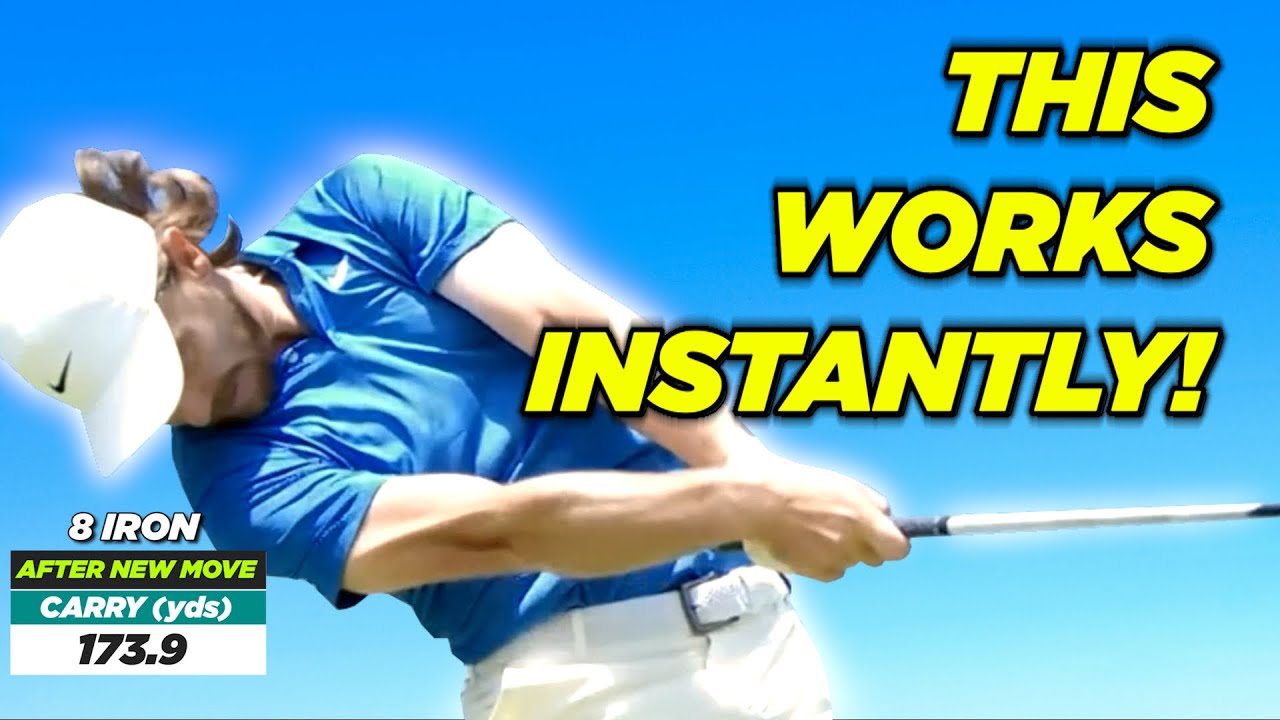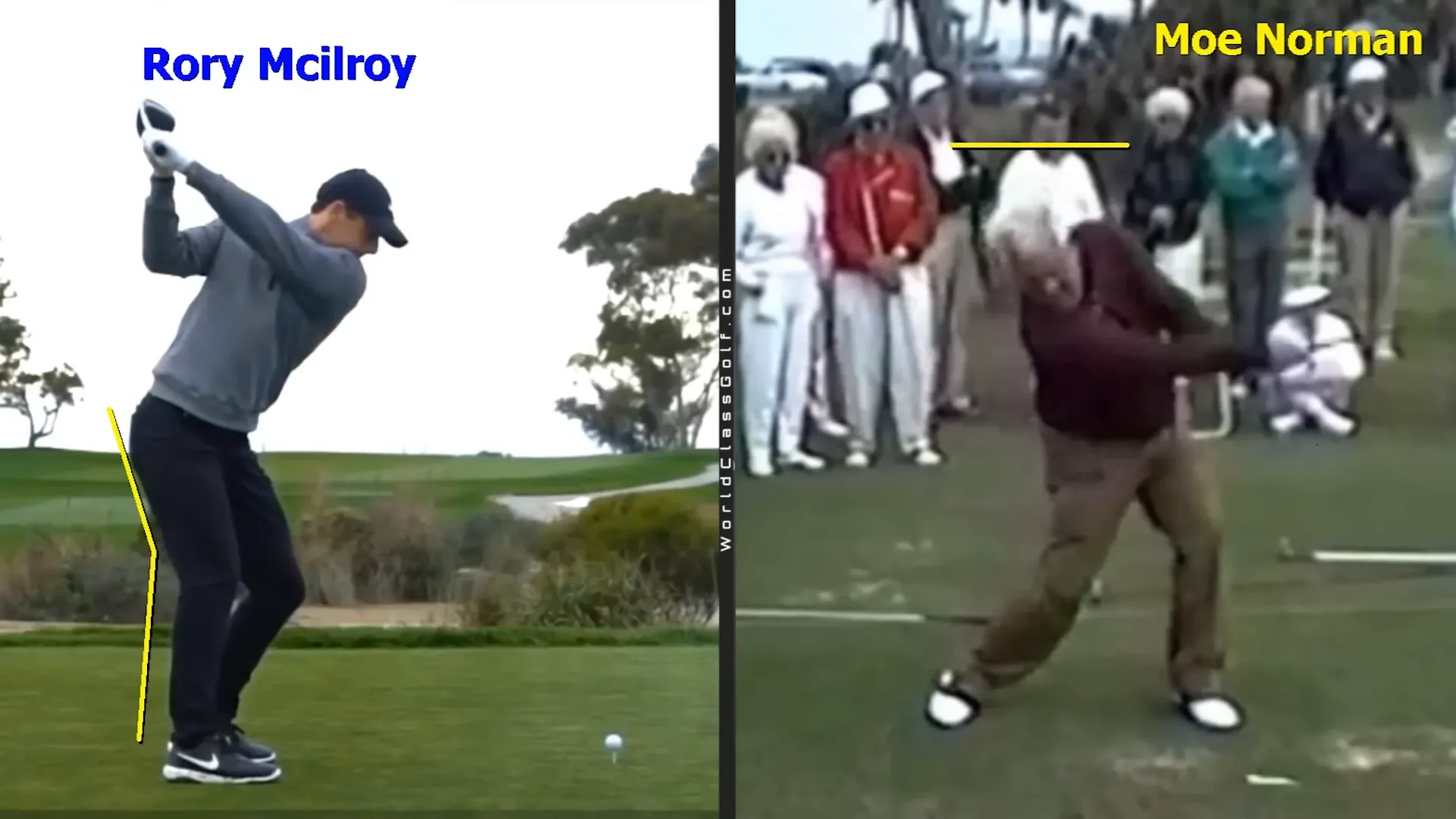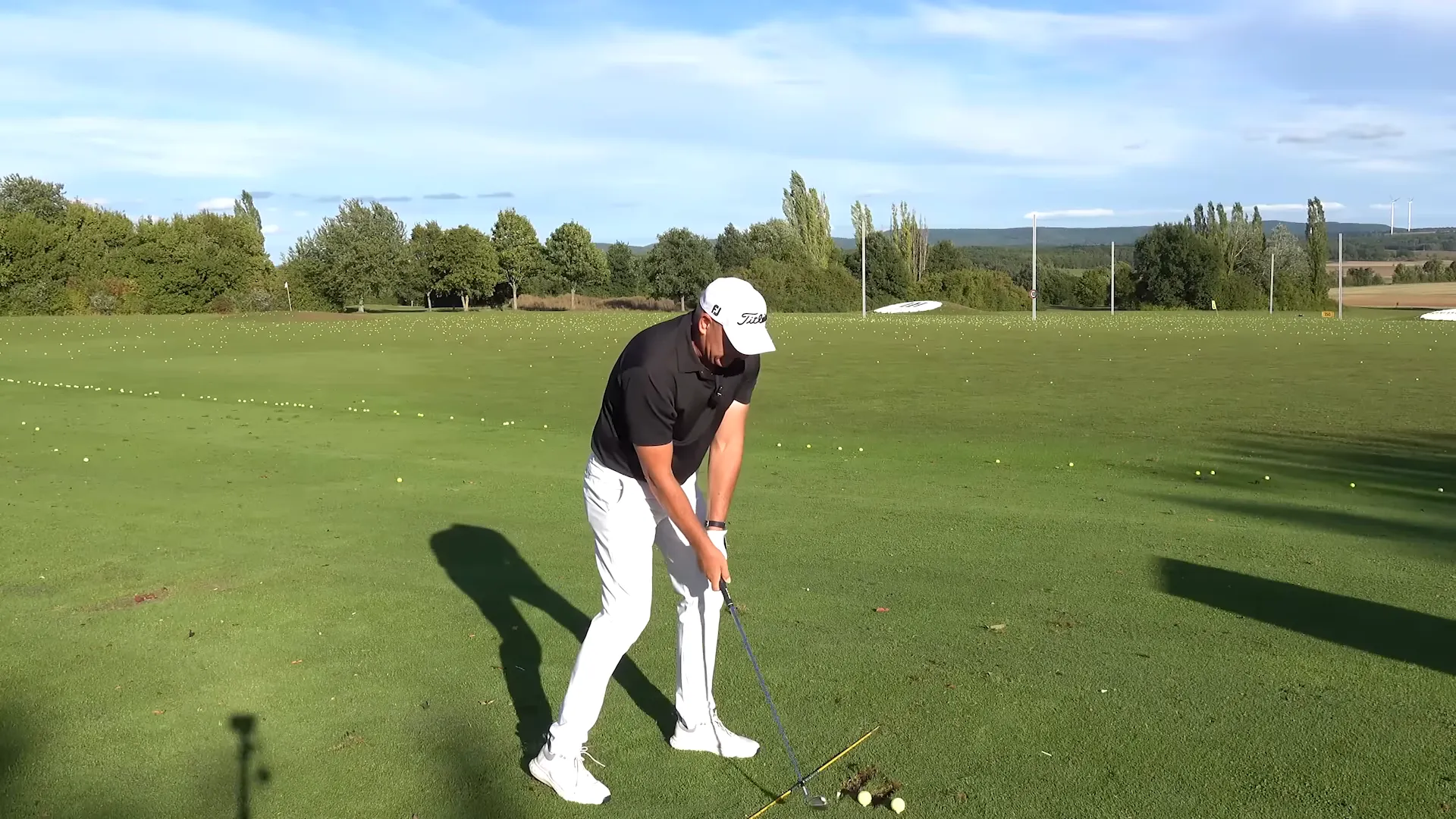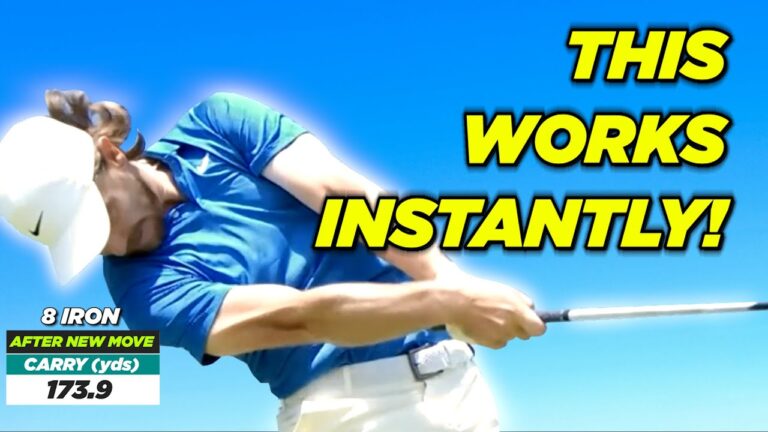
Want to transform your golf game fast? Dive into the essential downswing move that separates amateurs from PGA Tour players. I’m Craig Hanson, here to guide you through perfecting the lead-leg mechanics and mastering the McIlroy heel-toe drill. Learn not just how to avoid the common pitfall of an early lead-leg extension but also how legends like Padraig Harrington and Moe Norman achieved their flawless technique. Ready for a step-by-step guide to elevate your game? Let’s get started.

Overview
This article explores the biomechanics powering a golf downswing, pinpointing mistakes to avoid, immediate practice cues, and advanced drills. Expect clear instructions on drills and progressions that transform consistency and compression in your swing.
Step 1: Understand the Lead Leg — Why it Matters for Your Golf Downswing
The lead leg (for right-handed golfers, your left leg) is crucial in the swing’s sequence, influencing shaft lean and ball compression. If your lead leg absorbs the downswing weight correctly, your swing remains connected, avoiding flipping and inconsistency.
- Sequencing: A flexed lead leg supports proper hip rotation, separating the lower body from the upper.
- Compression: A bent lead knee at impact ensures ball compression with forward shaft lean, preventing scooping.
- Power Transfer: A lateral shift to a flexed lead leg stores energy for a powerful release through impact.
- Consistency: A stable lead leg minimizes sway, preventing the upper body from collapsing forward.
Avoid the “death move” of early lead-leg straightening. This blocks lateral shift and leads to flipping or thin shots. Instead, feel the lead leg stay bent through impact.

Step 2: Feel the Correct Lead-Leg Position — The Harrington and Norman Cues
Simple yet powerful cues from legends to enhance your swing:
“The worst thing you can do in golf is straighten your left leg for no reason.”
- “Sit” through the shot — maintain a flexed knee at impact.
- Squeeze your glutes — your right hip moves under the left.
- Ground your left big toe — stabilize the lead side.
- Keep your chest slightly up through impact — avoid lunging forward.
Step 3: Identify and Stop the Death Move — Common Faults to Fix in Your Swing
- Fat Shots: Club hits the ground before the ball due to early lead-leg straightening.
- Thin Shots: Incorrect clubhead height impacting ball properly.
- Loss of Shaft Lean: Results in poor compression.
- Upper Body Collapse: Dominated downswing reduces consistency.
Examine pant creases at impact to check knee flexion; firm pants suggest correct form.
Step 4: Practice the McIlroy Heel-Toe Drill — Setup and Execution
- Address the ball normally.
- Position right foot back; heel raised.
- In the downswing, plant the right foot heel to toe.
- Sustain lead leg flex and chest height.
- Finish with left side weight, knee flexed, right hip under.
The right heel-toe plant promotes hip motion under the torso, reinforcing the lead leg’s vital role.
Step 5: Progressions — Build Motor Patterns for Your Swing
Progress from no-ball swings to slow-motion ball strikes, then full-speed hits using feedback, finally incorporating routines on-course.
- Prioritize focused, impactful reps over quantity.
- Verify big toe stability and maintain video feedback on knee flexion.
Step 6: Advanced Feels — Ankle Roll and Separation
- Ankle Roll: Inner weight transfer for hip platform.
- Under-70-Degree Angle: Maintain lower-leg stability for power.
- Chest Up: Prevent collapse, retaining forward trajectory on impact.
Incorporate alignment sticks or markers for physical cues.
Step 7: Putting it All Together on the Course
- Pre-shot: Visualize heel-toe motion and reminders like “sit and hold.”
- Routines: Maintain lead toe grounding and ankle roll awareness.
- Execute without altering tempo.
- If fats persist: Practice more no-ball swings.
- Thins: Emphasize chest and knee height.
- Balance issues: Refocus on left foot stability.
FAQ — Your Questions Answered
Why is a bent lead leg essential?
A bent lead leg allows for optimal hip rotation and energy transfer, key components for effective ball striking.
Does the drill alter my setup?
The heel-toe drill is supplementary and helps instill proper mechanics without changing core setups.
Conclusion — Make the Lead Leg Your New Default for Better Golf
Adopt this approach for noticeable improvements in ball striking. Implementing the McIlroy heel-toe drill with cues for compression and stability will transform your swing consistency. Practice with purpose; revisit each step diligently, and you’ll achieve your golfing goals. Start your journey on the range today!


0 Comments